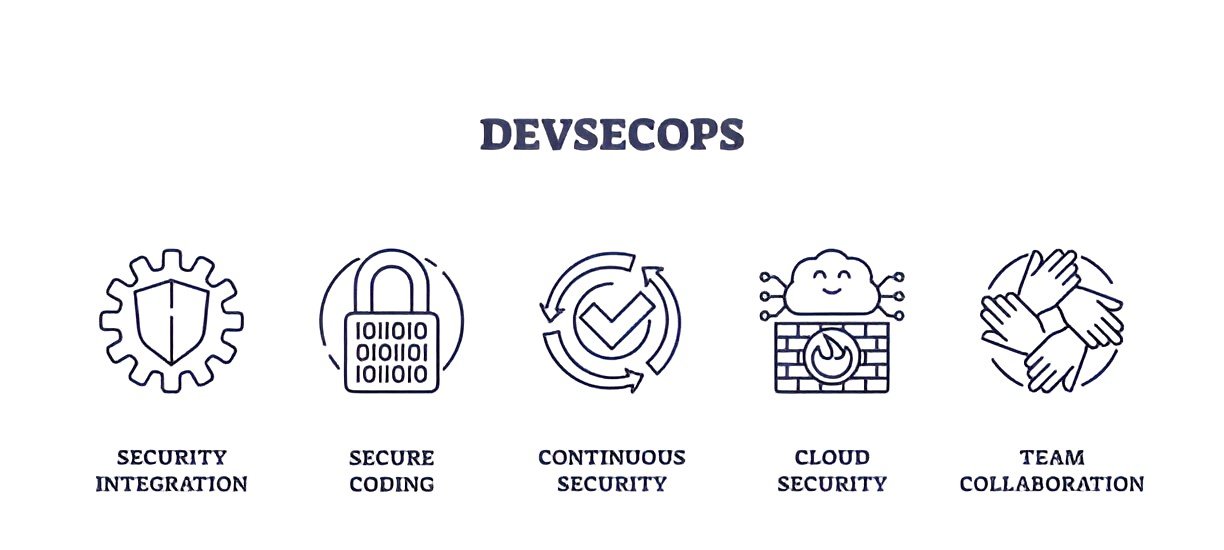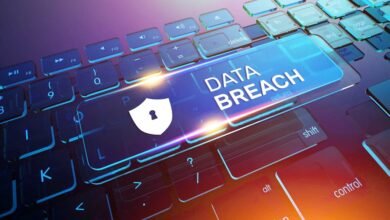Top 10 Data Security Trends to Watch in 2024
As we step into 2024, here are the top 10 data security trends to watch out for, helping both businesses and individuals stay safe in the digital age.

In today’s world, our lives are more connected to technology than ever before. With so much information stored and shared online, protecting that data has become crucial. Every year, cyber threats evolve, and data security measures have to keep up. As we step into 2024, here are the top 10 data security trends to watch out for, helping both businesses and individuals stay safe in the digital age.
1. The Rise of AI-Driven Threat Detection and Response
Artificial Intelligence (AI) has transformed many parts of our lives, and now it’s making a big impact in data security. AI-driven tools can analyze vast amounts of data quickly, helping detect unusual activity that might indicate a cyberattack. By using AI, companies can find and respond to threats faster than ever.
Why it matters: Traditional methods can be too slow to catch new types of attacks. AI helps security teams stay one step ahead, finding threats in real time and even predicting what might happen next.
Challenges: Although AI is powerful, it isn’t foolproof. Hackers are getting smarter, too, and sometimes they can fool AI systems. That’s why it’s still essential to have skilled people monitoring these systems.
2. Zero Trust Architecture Becomes Mainstream
In the past, organizations focused on securing their perimeters—keeping threats out. But with remote work and cloud-based services, this approach is no longer enough. That’s where Zero Trust Architecture comes in. Zero trust indicates that no one, whether they are on the network or not, is trustworthy by default. Every user must verify their identity every time they access the system.
Why it matters: Zero trust reduces the chance of unauthorized access because it verifies everyone’s identity each time. This model is especially useful for companies with remote workers or those using multiple devices.
How it works: Zero trust requires a combination of authentication (like passwords or biometric scans) and strict access controls. It’s all about “never trust, always verify.”
3. Quantum Computing: Preparing for the Future of Encryption

Quantum computing is still in its early stages, but it has the potential to change data security forever. Unlike traditional computers, which process data in bits (0s and 1s), quantum computers use qubits, which can be both 0 and 1 simultaneously. This allows them to solve complex problems, like breaking current encryption methods, much faster than today’s computers.
Why it matters: If quantum computing becomes more common, current encryption might no longer be secure. Organizations will need to upgrade their encryption methods to stay protected.
Future-proofing: Scientists are already working on “quantum-resistant” encryption methods to prepare for the future.
4. Privacy-Enhancing Technologies (PETs) for Better Compliance
Privacy-Enhancing Technologies (PETs) help protect data by allowing companies to analyze and use data without revealing private information. These technologies, like homomorphic encryption and differential privacy, make it possible to gain insights from data while keeping it safe.
Why it matters: Data privacy laws, like GDPR and CCPA, require companies to protect personal information. PETs help businesses comply with these laws while still using data to make decisions.
Where it’s used: Industries like healthcare and finance, which handle sensitive information, are adopting PETs to ensure data privacy.
5. Automated Security Testing and DevSecOps Integration

DevSecOps is a practice that integrates security into the software development process. Rather than checking for security issues at the end, developers use automated security testing throughout the entire process. This approach makes it easier to catch and fix vulnerabilities early.
Why it matters: Fixing security issues is much easier and cheaper during development than after the software is complete. Automated testing tools can identify problems without slowing down the development process.
Best practices: Many companies now make security a shared responsibility across all departments, which leads to safer, more reliable software.
6. Multi-Factor Authentication (MFA) Evolves with Biometrics
Multi-Factor Authentication (MFA) is not new, but it’s becoming more advanced with the addition of biometric methods like fingerprint and face recognition. MFA requires users to provide multiple pieces of evidence to confirm their identity, such as a password and a fingerprint scan.
Why it matters: MFA adds an extra layer of security. Even if a hacker guesses someone’s password, they won’t be able to get in without the second factor.
Drawbacks: Biometric data, like fingerprints, is unique and hard to change, which raises privacy concerns if it’s stolen. Despite this, MFA with biometrics remains a strong defense against unauthorized access.
7. Data Security for Remote and Hybrid Workplaces
The shift to remote and hybrid work has created new security challenges. Employees are now working from different locations, often on personal devices, which can make company data more vulnerable. Companies must adopt solutions that work in this flexible environment.
Why it matters: Remote work isn’t going away, and companies need to ensure that data remains safe wherever their employees are.
Solutions: Some common solutions include virtual private networks (VPNs), secure access policies, and training employees to recognize phishing attempts.
8. Cloud Security Enhancements and Shared Responsibility
As more businesses move their data to the cloud, cloud security is more important than ever. However, many people don’t realize that cloud security is a “shared responsibility.” Cloud providers secure the infrastructure, but companies still need to protect their own data.
Why it matters: The cloud offers flexibility and scaleability, but it also introduces new risks. It’s essential for companies to understand what they’re responsible for and take steps to protect their data in the cloud.
How to stay secure: Organizations should use cloud security tools, enable data encryption, and regularly back up their data to reduce risks.
9. Growing Emphasis on Cybersecurity Training and Awareness
Even the best technology can’t protect data if users don’t know how to use it safely. Many cyberattacks happen because of human error, like clicking on phishing links or using weak passwords. That’s why cybersecurity training and awareness programs are so important.
Why it matters: Cybersecurity is everyone’s responsibility. Training helps employees understand how to protect themselves and the organization from threats.
What works: Effective training includes regular updates, phishing simulations, and interactive activities to keep employees engaged.
10. Regulatory Compliance in an Emerging Landscape
Governments worldwide are updating data privacy laws to keep up with new technology and data-sharing practices. Regulations like GDPR and CCPA set strict rules for how companies handle personal information. In 2024, we can expect even more updates to these laws.
Why it matters: Companies that don’t comply with data privacy regulations face hefty fines and risk losing customer trust. Staying compliant is crucial for any business that handles personal information.
Best practices: Companies can stay compliant by regularly reviewing their data policies, conducting audits, and keeping up with changes in data privacy laws.
Conclusion
Data security is constantly evolving to keep up with new threats and technologies. In 2024, trends like AI-driven threat detection, zero trust, and privacy-enhancing technologies will play a significant role in keeping our information safe. Staying informed about these trends is essential for businesses and individuals alike. As we embrace these advancements, we must also remember the importance of training and awareness, as well as compliance with data privacy laws.
FAQs
1. Why is data security important in 2024?
Data security is essential because it protects sensitive information from cyber threats, which are constantly evolving. With more data being stored and shared online, keeping it safe is more important than ever.
2. How does AI impact data security?
AI helps detect and respond to threats in real time, making it easier to catch cyberattacks before they cause damage. However, hackers are also using AI, so security systems must constantly improve.
3. What is zero trust architecture?
Zero trust is a security model that requires every user to verify their identity each time they access a system, ensuring only authorized users can get in.
4. How can companies prepare for quantum computing?
Companies can start exploring quantum-resistant encryption methods to stay prepared for the potential risks of quantum computing.
5. What are privacy-enhancing technologies (PETs)?
PETs are tools that allow companies to analyze data while keeping it private. These technologies are especially useful for industries that handle sensitive information, like healthcare and finance.











